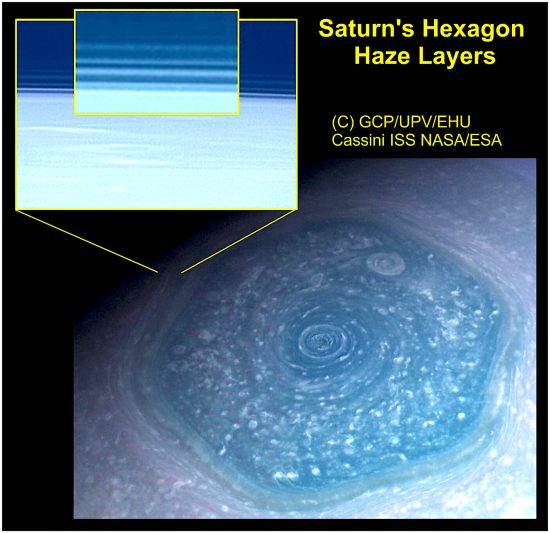
May 11, 2020
Electricity exhibits 120 degree symmetry.
Previous Picture of the Day articles report that Saturn’s south pole is too hot—hotter than can be produced by the dim sunlight that it receives. The mechanistic view of Saturn fails to explain the increased temperature, while Electric Universe proponents argue that another source for the energy input must be considered and that is electricity.
One of the most bizarre configurations discovered on Saturn is the hexagon that dominates its north pole. The formation was originally seen by cameras onboard the twin Voyager spacecraft that flew by Saturn in November 1980 and then again in August 1981. Cassini also obtained clear images of the formation. NASA researchers continue to refer to the structure as “unexplained”, since the convective interpretations of Saturnian weather do not include mechanisms by which clouds can organize themselves into polygonal shapes.
Recently, astronomers announced that there are regularly spaced layers of clouds surrounding the hexagon. According to Professor Agustín Sánchez-Lavega:
“The Cassini images have enabled us to discover that, just as if a sandwich had been formed, the hexagon has a multi-layered system of at least seven mists that extend from the summit of its clouds to an altitude of more than 300 kilometers above them.”
The demarkation between the blankets of cloud gives away their origin in electrical double layers. It is known among plasma physicists that beams of electricity flowing through plasma produce a central column surrounded by concentric cylinders. The cylindrical current filaments exhibit long-range attraction and short-range repulsion that results in evenly spaced vortices surrounding the column. As the filaments rotate around one another, a preferred hexagonal cross-section forms within the innermost column.
The hexagon at Saturn’s north pole is another example of electrical activity in the Solar System on a tremendous scale. Birkeland current filaments, so often mentioned in these pages, connect the Sun with its family of planetary bodies. The energy flows most strongly into the giant gas planets because their charge differential with the Sun is greater than that of their smaller, rocky cousins.
The “Electric Sun” is what drives the energetic meteorological phenomena on Saturn (and the other planets). Electrical circuits power the Sun and initiate the “anomalous heating” that has been found on Saturn, as well as on the other gas planets that have been examined – Jupiter and Neptune display “hot poles” just like Saturn.
Stephen Smith
The Thunderbolts Picture of the Day is generously supported by the Mainwaring Archive Foundation.












